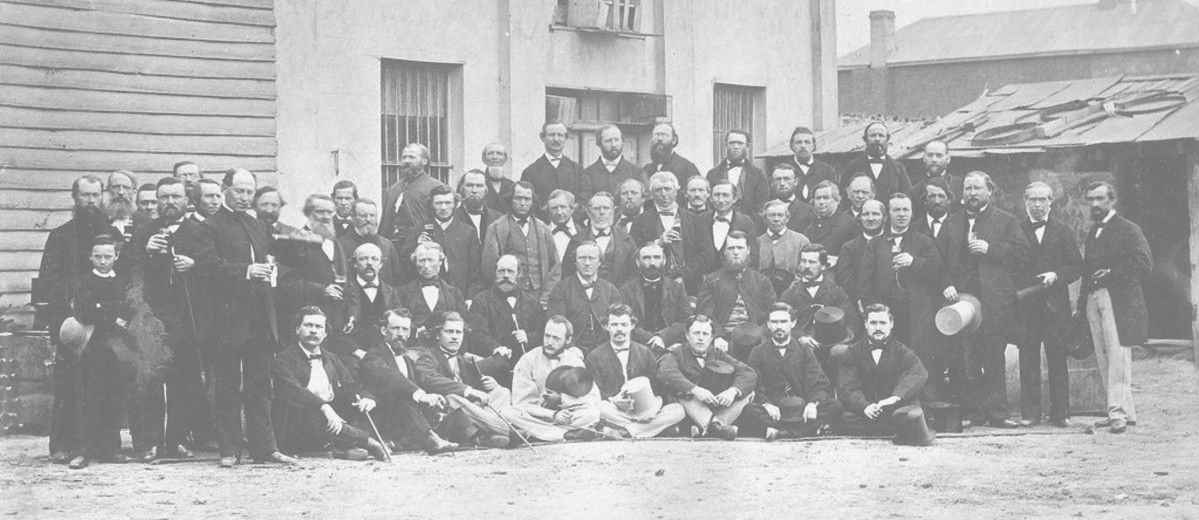Organisation
ContributeDer Deutscher Verein was founded on 15 July 1854, at a time when German migrants constituted 7–10% of the non-Aboriginal population of South Australia. The club began meeting in the Hotel Europe in Grenfell Street, but ‘owing to its increasing strength and prosperity’ it sought more extensive accommodation in a building of its own in the mid 1870s.
Establishing a meeting place
Land was purchased in Pirie Street for £3000 and GR Johnson of Melbourne was commissioned to design the premises. The majestic design in French Renaissance style contained small and large rooms, including a library, billiard room, smoking room, six bedrooms, kitchen and dining room. A meeting room could accommodate up to 400 people. A substantial balcony overlooked the street. A large hall, named Albert Hall, was designed by Bayer & Withall and added to the rear of the building. It accommodated 1500 people.
The foundation stone was laid on 19 August 1878 with great ceremony: ‘There was a profuse display of bunting and the block of stone to which such importance is attached was crowned by a handsome garland of flowers’. President of the club, Martin Basedow MP, was handed a tin case containing ‘copies of the leading newspapers of the day; current coins of the realm’ and a document on the formation and membership of the club. The foundation stone was lowered over the case and cemented in by Basedow using a silver trowel. A band played a ‘German national air’ and a choir sang ‘Shepherd’s Sunday Song’ in German. The ‘Song of Australia’ (written by Caroline Carleton, wife of the superintendent of the West Terrace Cemetery, Adelaide with music composed independently by Carl Linger, the inaugural conductor of the Adelaider Leidertafel) was also sung and three cheers were given for the German Emperor. The ceremony was followed later in the evening by a ‘sumptuous spread’ at Hotel Europe attended by 100 members and guests.
Opening
The clubhouse was opened at 7.30pm on 14 July 1879, coinciding with the twenty-fifth anniversary of the German Club. The portico was festooned with green and decorated with coloured lamps for the occasion. The Concordia band played and the Adelaider Liedertafel sang from the balcony. They were followed by fireworks, while red and green lights shone from the main windows. The club’s president then opened the door with a silver key and a celebratory banquet was served in the assembly room.
Shift to Flinders Street
The German Club continued in these premises until 1899, when it was forced to sell the building to pay for accumulated debts. The German Club that operates today in Flinders Street emanated from the Südaustralischer Allgemeiner Deutscher Verein (South Australian German Association).
Media
Add mediaImages

Image Courtesy of the State Library of South Australia, SLSA: B 62414/1/39, Public Domain

Image courtesy of the State Library of South Australia, SLSA: B 27793, Public Domain

Image courtesy of the State Library of South Australia, SLSA: PRG 280/1/38/304, Public Domain.

Image courtesy of the State Library of South Australia, SLSA: B27445, Public Domain


CommentAdd new comment
Quickly, it's still quiet here; be the first to have your say!